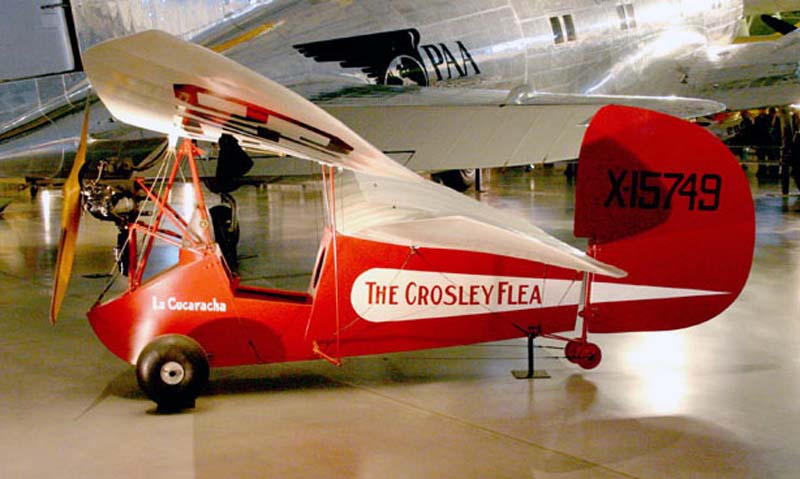| Mignet | ||||||||||
 |
||||||||||
|
HM.14
Pou du Ciel Photo: Robert Deering 10/23/2006 Smithsonian National Air and Space Museum Dulles International Airport (IAD) Chantilly, Virginia |
||||||||||
|
Frenchman
Henri Mignet designed the HM.14 Pou du Ciel (Flying Flea) in
1933. He envisioned a simple aircraft that amateurs could
build and even teach themselves to fly. In an attempt to
render the aircraft stall-proof and safe for amateur pilots
to fly, Mignet staggered the two main wings. The HM.14
enjoyed a period of intense popularity in France and England
but a series of accidents in 1935-36 permanently blackened
the airplane's reputation. Thise Mignet-Crosley Pou du Ciel is the first HM.14 made and flown in the United States. Edward Nirmaier and two other men built the airplane in November 1935 for his boss, Powell Crosley, Junior. Crosley was president of the Crosley Radio Corporation. He believed that the Flea might become a popular aircraft in the United States. After several flights, a crash at the Miami Air Races in December 1935 grounded the Crosley HM.14 for good. In 1960 Patrick H. "Pat" Packard donated this Pou du Ciel to the Smithsonian. In 1987 Packard and Patti Koppa finished restoring the aircraft. The original ABC Scorpion engine was missing, so these two artisans fabricated a wooden replica.
|
||||||||||
|
||||||||||
